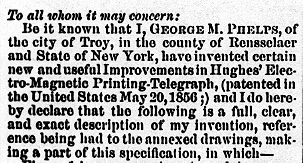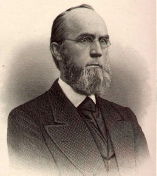
At the Smithsonian Institution's National Museum of American History, there is an exhibit showing the evolution of the information age in the United States. Among the inventions of Joseph Henry, Samuel Morse, Alfred Vail, Elisha Gray, Royal House, and Thomas Edison a short paragraph is displayed:
"George Phelps, a machinist who specialized in telegraph instruments, developed what
became the standard printing telegraph in American offices. His device could send about
60 words per minute. (Morse sounders averaged about 30 words per minute)."
Additionally, a patent model of a printing telegraph of his is displayed. Above it is stated:
"Phelps printing telegraph (patent model),1859."
Although the patent model on display is actually a model of a later Phelps invention, the 1859 patent reference refers to his Combination Printer that he invented and patented while in Troy.
Included in the exhibit are the patent models of Royal House and David Hughes. The reference to Phelps' 1859 patent in the exhibit, puts his Combination Printer in the correct chronological order with the inventions of House and Hughes. Their printing telegraphs also have a Phelps
and a Troy connection.


The first paragraph from Phelps' Combination Printer patent, number 26003.
November 1, 1859.
Phelps held over thirty U.S. patents in his career

residence being 173 Fourth St.. He and his immediate family are
buried in Oakwood Cemetery, Troy, N.Y..

On the campus of Russell Sage College in Troy, there is a plaque placed on the Anna Plum Memorial Building. It gives recognition to Troy's most famous resident, Samuel Wilson (Uncle Sam) for once residing at that location. It seems appropriate that someday
another plaque could be placed there, for it was on these same grounds where George Phelps once manufactured and invented his telegraph instruments.
It was here that he conducted his work on the House, Hughes, and Combination Printing Telegraphs.
His contributions in the development of the printing telegraph in the United States are specifically recognized by the Smithsonian Institution in their Information Age exhibit... They place a machinist from Troy among America's "first" group of telegraph inventors.


Back to first page
Back to the Telegraph-History home page
